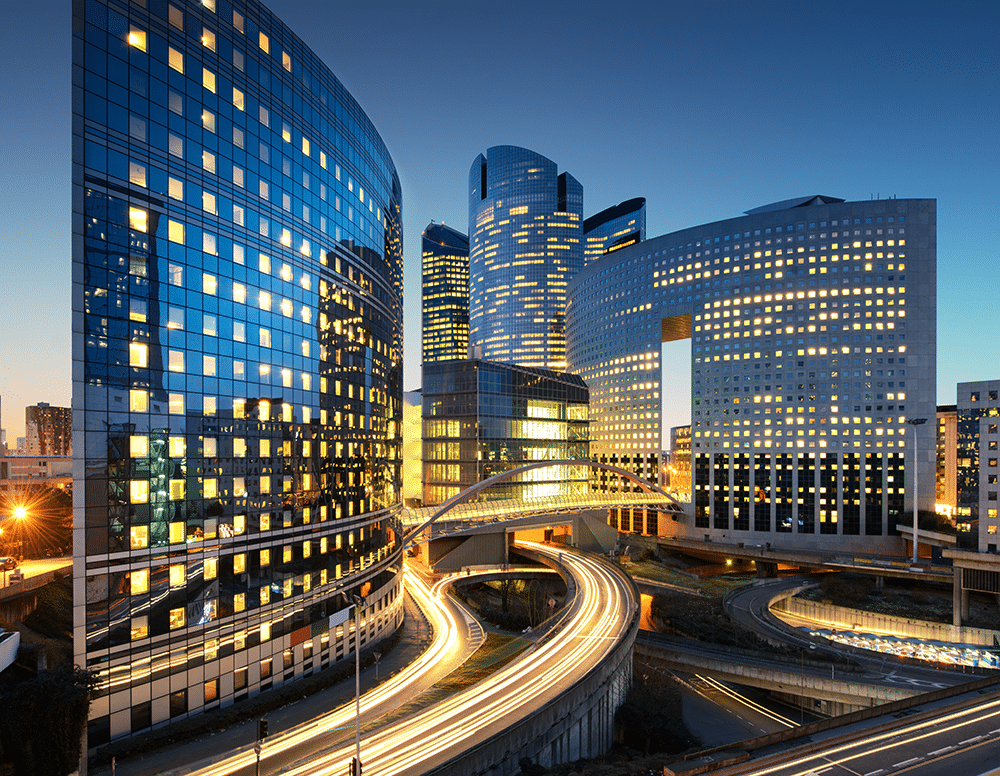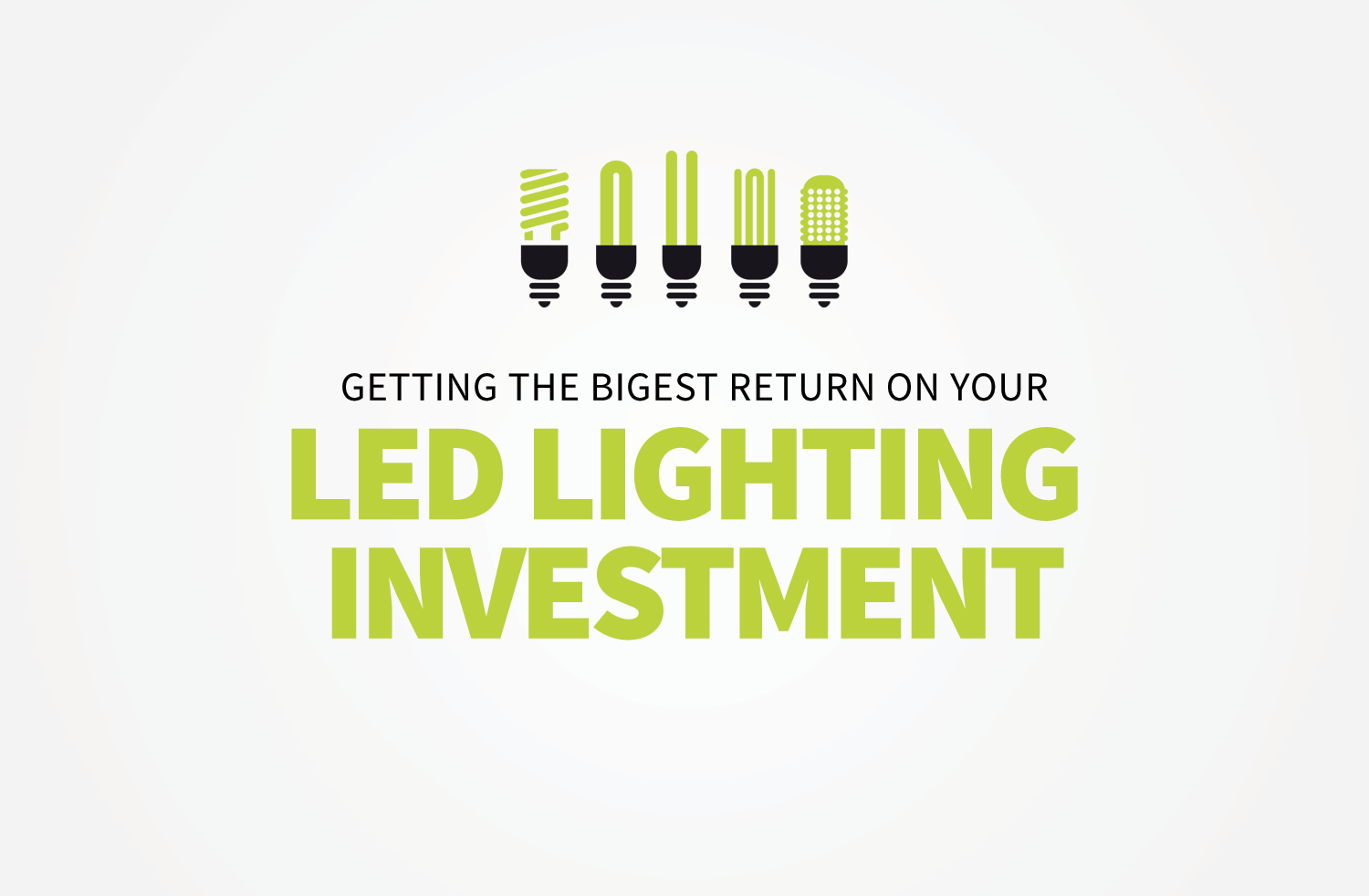Commercial LED Lighting Trends of 2015

- LED University, News
- By Vennard
LED lighting wasn’t just a commercial lighting trend in 2015 – but looks to be a trend in 2016, and 2017, and 2018, and so on. Commercial LED lighting suppliers should be happy to learn that this lighting sector is expected to be valued at about $25 billion by 2021, compared to $2.7 billion in 2013. There are many reasons for the surge in LED lighting, including:
 Flood lights are used in commercial applications to light things like parking lots and property grounds to deter potential theft – more and more business owners turned to LED bulbs for these lights in 2015. Business owners did so for many of the same reasons we outlined in the above section. But there’s one other big reason why LEDs are gaining traction in this category – weather-resistance.
Yes, commercial LED light fixtures are largely unaffected by temperature changes and inclement weather, whether it be heat or cold, snow or rain. Combine this feature with the low maintenance required for LED bulbs, and LEDs are a true winner in this area.
Flood lights are used in commercial applications to light things like parking lots and property grounds to deter potential theft – more and more business owners turned to LED bulbs for these lights in 2015. Business owners did so for many of the same reasons we outlined in the above section. But there’s one other big reason why LEDs are gaining traction in this category – weather-resistance.
Yes, commercial LED light fixtures are largely unaffected by temperature changes and inclement weather, whether it be heat or cold, snow or rain. Combine this feature with the low maintenance required for LED bulbs, and LEDs are a true winner in this area.
- An energy efficiency standard from the United States government that was implemented in 2014, essentially limiting the creation of standard incandescent bulbs.
- All of an LED bulb’s benefits, such as less energy usage, lower long-term lighting costs, less heat emitted, longer lasting and return on investment within 2 to 3 years.
- Availability of LED bulbs in a plethora of new applications, from residential to commercial to industrial LED lights.
Outdoor LED Flood Lights
 Flood lights are used in commercial applications to light things like parking lots and property grounds to deter potential theft – more and more business owners turned to LED bulbs for these lights in 2015. Business owners did so for many of the same reasons we outlined in the above section. But there’s one other big reason why LEDs are gaining traction in this category – weather-resistance.
Yes, commercial LED light fixtures are largely unaffected by temperature changes and inclement weather, whether it be heat or cold, snow or rain. Combine this feature with the low maintenance required for LED bulbs, and LEDs are a true winner in this area.
Flood lights are used in commercial applications to light things like parking lots and property grounds to deter potential theft – more and more business owners turned to LED bulbs for these lights in 2015. Business owners did so for many of the same reasons we outlined in the above section. But there’s one other big reason why LEDs are gaining traction in this category – weather-resistance.
Yes, commercial LED light fixtures are largely unaffected by temperature changes and inclement weather, whether it be heat or cold, snow or rain. Combine this feature with the low maintenance required for LED bulbs, and LEDs are a true winner in this area.
Smart Commercial LED Lighting
It seems that everything is connected these days, from thermostats to appliances to door locks. Not to be outdone, lighting too is getting “smarter.” Yes, more businesses are outfitting their operations with sensors and a wireless network to link and control them. Such smart lighting works similarly to other similarly intended applications – they save energy and can be controlled via mobile device from anywhere you can get data or Internet service. Smart lighting gained a bit of traction in 2015, but is only scratching the surface of its possibilities.Fluorescent LED Tube Lighting
Tube lighting is used to illuminate everything from store shelves to overhead in grocery stores to warehouse floors. Until recently, these lights were primarily of the fluorescent variety. This was largely due to the fact that these types of lights were more affordable than other types of tube lighting,like, say, LED. That’s not necessarily the case anymore, as more businesses have come to realize the benefits of LED lighting, despite a higher up-front cost when compared to conventional lighting technologies.Solar Powered Lights
When you think of solar powered lights, you might think of garden lights or yard stakes – not necessarily commercial or industrial lighting applications. But that’s what became more of the norm in 2015, and will likely continue to evolve in this sector as the technology matures. Office buildings, apartment complexes and roadways were adopters of solar powered lights in 2015. Next up could be streetlights or parking lot lights. The big benefit of solar powered lights is that they’re a highly sustainable alternative, which uses the energy of the sun rather than the energy of the power grid. With the commercial outdoor lighting market valued at some $11 billion, there’s opportunity for big growth here. Solar powered lights may not specifically be tied to LED bulbs, but it’s still a cool development worth mentioning. LEARN: How to Choose the Right Solar LightsHighlighting
No, we’re not talking about the writing utensil often used to designate important passages in textbooks, we’re talking about a commercial lighting trend made possible by LED bulbs. Highlighting essentially allows companies and businesses to shine light only on specific areas. Think of it as “intentional lighting.” For instance, in a retail store, highlights could be used primarily to draw attention to specific merchandise. LEDs better allow for this highlighting feature, as they allow users to shine light in a single direction, while also helping users realize other benefits of LED lights, such as energy and cost savings. With 2015 now behind us, what will be the big commercial LED lighting trends of 2016? For more information on commercial LED lighting, contact us today. We pride ourselves in being among the most knowledgeable and credible Houston LED lighting stores. LEARN: How to Setup Your Retail LightingRelated Posts
Tagged commercial led lighting


